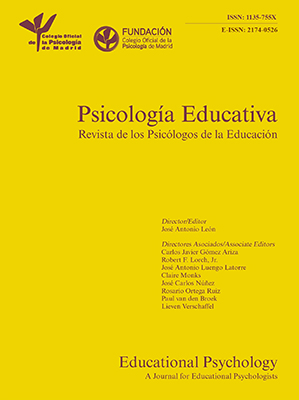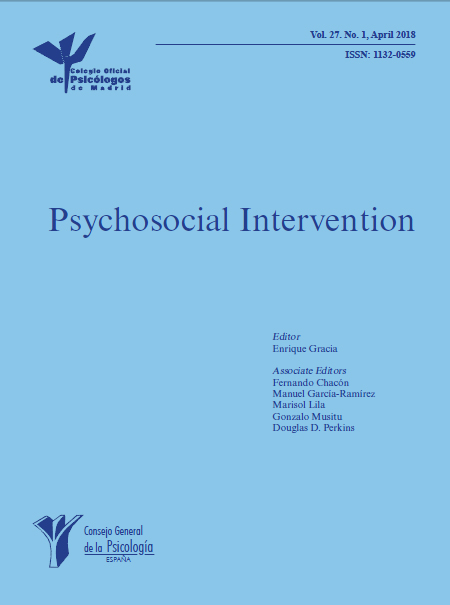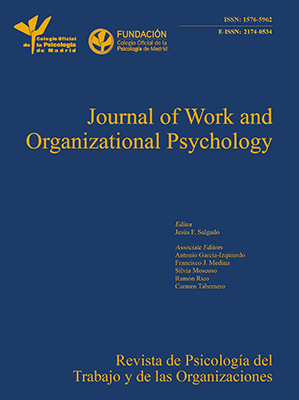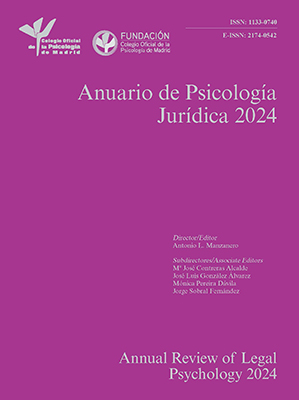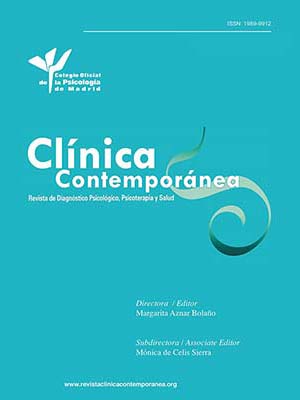
Therapeutic Relationship Coding System (TRCS): An Observational Tool for Moment-to-Moment Analysis of the Therapeutic Relationship
[El Sistema de Categorización de la Relación Terapéutica (SCRT) como instrumento de observación para el análisis momento a momento de la relación terapéutica]
María C. Guerrero-Escagedo, Ana Calero-Elvira, Diego Fernández-Regueras, & Alba Luque-González
Universidad AutĂłnoma de Madrid, Spain
https://doi.org/10.5093/clh2025a10
Received 13 September 2024, Accepted 26 February 2025
Abstract
Background: Numerous studies support that the alliance is a strong predictor of therapeutic outcome. However, the specific behaviors that constitute the therapeutic alliance remain unclear. In part, this is because most studies use self-report measures to assess alliance strength rather than external observational measures that help describe which verbal interaction behaviors enhance the therapeutic relationship. To address this gap, this study introduces an observational tool for moment-by-moment analysis of the therapeutic relationship. Method: Video recordings of 50 individual psychotherapy sessions from 48 cases treated by 27 therapists were analyzed. Regular team discussions led to the final coding system. Results: The developed observational coding system is presented. Kappa values are considered good to excellent (.67-.80), as are the levels of observer accuracy (82-90%). Conclusions: This tool will help identify behaviors that promote a good therapeutic relationship, so that guidelines can be established to help make psychological interventions more effective and efficient.
Resumen
Antecedentes: Muchos estudios respaldan que la alianza es un buen predictor del resultado terapéutico. Sin embargo, siguen sin conocerse con exactitud cuáles son las conductas específicas que constituyen la alianza terapéutica, lo cual se debe en parte a que la mayoría de los estudios utilizan medidas de autoinforme que evalúan el grado de la alianza, en lugar de medidas de observación externa que ayuden a describir qué comportamientos de la interacción verbal favorecen la relación terapéutica. Para abordar esta limitación, este estudio desarrolla un instrumento observacional para el análisis momento a momento de la relación terapéutica. Método: Se analizaron las grabaciones en vídeo de 50 sesiones de terapia individual correspondientes a 48 casos tratados por 27 terapeutas. Se llevaron a cabo reuniones periódicas de discusión en equipo hasta dar con el sistema de categorías definitivo. Resultados: Se presenta el sistema de categorías de observación desarrollado. Los valores de kappa se consideran buenos a excelentes (.67-.80), así como lo niveles de precisión de los observadores (82-90%). Conclusiones: El instrumento ayudará a identificar las conductas que promueven una buena relación terapéutica, de manera que puedan establecerse pautas de actuación para llevar a cabo intervenciones psicológicas más eficaces y eficientes.
Palabras clave
MetodologĂa observacional, Sistema de categorĂas, RelaciĂłn terapĂ©utica, Alianza, InteracciĂłn terapeuta-cliente, Conducta verbalKeywords
Observational research, Coding system, Therapeutic relationship, Alliance, Therapist-client interaction, Verbal behaviorCite this article as: Guerrero-Escagedo, M. C., Calero-Elvira, A., Fernández-Regueras, D., & Luque-González, A. (2025). Therapeutic Relationship Coding System (TRCS): An Observational Tool for Moment-to-Moment Analysis of the Therapeutic Relationship. Clinical and Health, 36(3), 135 - 144. https://doi.org/10.5093/clh2025a10
Correspondence: ana.calero@uam.es (A. Calero-Elvira).The therapeutic relationship plays a key role in psychotherapy. It is estimated that approximately 15% of therapeutic success is due to the therapeutic relationship, making it the second most important explanatory component (Norcross & Lambert, 2019a). Of all the elements of the therapeutic relationship, the alliance has received the most attention to date (Horvath, 2018; Tschuschke et al., 2022). Numerous studies have found that the alliance is a strong predictor of psychological treatment outcome, regardless of the therapist’s theoretical orientation, the methods and measures used, and the client’s problem (Flückiger et al., 2018). Despite the consensus and empirical support for the correlation between alliance and treatment outcome, it remains unclear what behaviors constitute a therapeutic alliance and facilitate learning processes (Daniels & Wearden, 2011; Karademas, 2021). Indeed, it is striking that most treatment manuals and professional guidelines in psychology emphasize the importance of developing a strong alliance, but do not provide specific evidence-based guidelines on how to achieve it (Norcross & Lambert, 2019a). There are two main reasons for this. The first is that there is conceptual overlap between the different elements of the therapeutic relationship, particularly between the concepts of alliance and therapeutic relationship. For example, it is common to find these two concepts conflated in the literature, sometimes used as synonyms. However, although they are strongly related, they are theoretically distinct constructs (Vaz et al., 2023). Specifically, the alliance would be the way to conceptualize what has been achieved through the appropriate use of the elements of the therapeutic relationship (Horvath et al., 2011). Although there is no consensus definition of what the alliance is, currently the most cited in the scientific literature is Bordin’s (1979) definition (Horvath, 2018; Vaz et al., 2023). According to Bordin (1979), the therapeutic alliance is the achievement of a collaborative attitude between therapist and client based on the following three aspects: (1) agreement on therapeutic goals, (2) consensus on the tasks necessary to achieve these goals, and (3) the bond between therapist and client. The second reason for the current difficulty in identifying the specific behaviors that make up a therapeutic alliance is that most research has used self-report measures to assess alliance strength, rather than external observational measures that help describe what behaviors of verbal interaction enhance the therapeutic relationship (Flückiger et al., 2019; Muntigl & Horvath, 2016). Currently, there are more than 30 different measures that assess the concept of alliance (Flückiger et al., 2019; Vaz et al., 2023). The four most commonly used are the California Psychotherapy Alliance Scale (CALPAS; Gaston & Marmar, 1994), the Helping Alliance Questionnaire (HAQ; Alexander & Luborsky, 1987), the Vanderbilt Psychotherapy Process Scale (VPPS; Suh et al., 1989), and the Working Alliance Inventory (WAI; Horvath & Greenberg, 1989). Of these, the latter is worth highlighting, as it has been used in 69% of alliance studies (Flückiger et al., 2018). Although these instruments have adequate psychometric properties, they do not allow us to analyze the therapeutic relationship moment-by-moment in session. Instead, they provide an overall assessment of what happened after a session. The same is true of observational versions of these measures, as well as others that analyze more specific aspects of the therapeutic relationship. For example, the Resolution Rating System (3RS; Eubanks et al., 2019) checks the frequency of various rupture markers and resolution strategies at five-minute intervals and then provides an overall assessment of their impact on the alliance at the end of the session. Therefore, the American Psychological Association (APA), through its Interdivisional Task Force on Evidence-Based Relationships and Responsiveness, has recommended that future research use in-session observations to determine which therapeutic behaviors contribute to the development of the therapeutic alliance. Specifically, they have suggested examining the components of the therapeutic relationship through moment-to-moment analysis, in addition to using post-session measures such as those previously mentioned (Norcross & Lambert, 2018). To this end, a direct and systematic method of analyzing behavior quantitatively is the use of an observational coding system. Such systems permit sequential analysis, thereby facilitating the study of therapist-client interaction patterns (Schermuly & Scholl, 2012). Despite the APA’s recommendation, there are hardly any observational tools that analyze the therapeutic relationship on a moment-by-moment basis. As far as we know, the only two instruments are the Therapeutic Collaboration Coding System (TCCS; Ribeiro et al., 2013) and the System for Observing Family Therapy Alliances (SOFTA; Friedlander et al., 2006). The TCCS is an observational coding system that allows moment-by-moment analysis of a specific element of the therapeutic relationship: the collaboration between therapist and client. From a narrative perspective, this instrument classifies therapist interventions into two distinct categories according to the therapist’s primary strategy for facilitating therapeutic change. The first strategy (labeled Supporting) aims to make the client feel supported and safe. The second strategy (labeled Challenging) consists of challenging the client’s dominant maladaptive self-narratives. According to the authors of this instrument, an appropriate therapeutic collaboration can only take place if a balance is maintained between the two strategies. On the other hand, the client’s responses are classified into three different categories according to their agreement with the therapist (Validation, Invalidation, and Ambivalence). Finally, this instrument classifies the quality of the therapeutic collaboration according to the categorization of the sequences between therapist and client (Ribeiro et al., 2013). Regarding the SOFTA, it is an observational tool designed specifically for family or couple therapy. The reason for this is that it has been shown that the alliance in this type of therapy is partially different from that in individual therapy, because when two or more family members are involved in the therapeutic process multiple alliances need to be established and maintained (Friedlander et al., 2019). This instrument assesses the therapeutic alliance by systematically observing the behavior of each client and the therapist. In all, it assesses the presence of 43 therapist and 44 client behaviors that are grouped into four dimensions: Engagement in the therapeutic process, Emotional connection to the therapist, Safety within the therapeutic system, and Shared sense of purpose within the family. During the therapy session, the occurrence of each behavior is recorded, and global estimates are made for each dimension based on the type, frequency, and intensity of the observed behaviors using a 7-point Likert scale (Friedlander et al., 2006). Given that the existing instruments do not fully capture the elements of the therapeutic relationship in individual therapy with adults, it was deemed appropriate to develop an instrument that would address this gap. Specifically, the aim of this study was to develop an observational coding system that would allow for the analysis of the therapeutic relationship through the systematic observation of the therapist-client interaction. To this end, each of the therapist and client utterances will be coded individually, with each utterance being assigned a code. By analyzing the verbal behavior in each turn of speech, it will be possible to conduct comparative and sequential analyses. Sample We worked with video recordings of 50 psychotherapy sessions (48 hours, 46 minutes, and 29 seconds). The mean duration of each session was 58 minutes and 32 seconds (SD = 10.57). The clients (n = 48) were 29 women and 19 men ranging in age from 18 to 79 years (M = 27.52, SD = 13.04). All were receiving individual psychological treatment for various problems: depression (22.9%), generalized anxiety (10.4%), family problems (10.4%), low self-esteem (8.3%), social anxiety (8.3%), suicidal ideation (6.3%), eating and body image problems (4.2%), obsessive-compulsive disorder (4.2%), relationship breakup (4.2%), workplace anxiety (4.2%), tobacco use (2.1%), lack of social skills (2.1%), insomnia (2.1%), impulse control problems (2.1%), poor time management (2.1%), specific phobia (2.1%), relationship problems (2.1%), and bruxism (2.1%). As for the therapists (n = 27), they were all cognitive-behavioral psychologists working at the University Psychology Clinic of the Universidad Autónoma de Madrid (Centro de Psicología Aplicada; CPA-UAM). Specifically, there were 23 women and 4 men with different years of clinical experience (M = 3.37, SD = 2.81). In terms of session modality, 90% were face-to-face and 10% were videoconference. The reason for this was that most of the scientific literature on which we based the coding system referred to face-to-face therapy. However, we felt it was appropriate to test the adaptation of the coding system to the videoconference modality, as its use has multiplied exponentially since the COVID-19 pandemic (Wind et al., 2020). In addition, we randomly selected recordings based on the duration of each phase of the therapeutic process. As a result, 22% of the sessions corresponded to the initial therapeutic assessment phase, another 22% to the problem clarification and treatment planning phase, 40% to the intervention phase itself, and 16% to the follow-up phase. Written informed consent was obtained from all clients and therapists to proceed with the recording and observation of the sessions. The procedure of the present study was also approved by the Research Ethics Committee of the Universidad Autónoma de Madrid as it was considered to comply with all ethical requirements (approval code CEI-105-2056). Instruments A closed-circuit camera and video system previously installed at the University Clinic was used to record the sessions. All cameras were located in one of the upper corners of the therapy rooms and focused directly on the therapist to ensure that the client’s face was not recorded. In this way, the client’s right to confidentiality was protected to the greatest extent possible. On the other hand, The Observer XT 16 (Noldus ©) software was used to observe and code the sessions. This software was also used to calculate inter-rater reliability, as was KappaAcc (Bakeman, 2023). Procedure To develop the observational coding system, we followed the steps outlined by Bakeman and Gottman (1997) described below. - Formulating a Research Question. We began by asking ourselves a clear research question: “What therapist and client behaviors are relevant to the therapeutic relationship?” - Choosing a Level of Analysis. We chose a social level of analysis, which is the most commonly used level for analyzing complex human behavioral interactions. To identify the relevant factors to observe, we conducted a comprehensive review of the literature on the therapeutic relationship. This was conceptualized as an ongoing interaction between therapist and client that is shaped by in-session behaviors. Although the specific elements that constitute this relationship have been highlighted in the literature, they remain a topic of debate. In contrast, the therapeutic alliance has been conceptualized as the result of the effective use of these relational elements of the therapeutic relationship. Because we wanted to ensure that the system captured all behaviors potentially relevant to the therapeutic relationship, not just those related to the therapeutic alliance, we sought to identify both constructive behaviors that may contribute to a positive therapeutic relationship (i.e., those that promote the therapeutic alliance) and detrimental behaviors that may contribute to a negative therapeutic relationship. To this end, we began with all of the elements identified in the literature as central to the therapeutic relationship. From these, we selected those that were considered “pantheoretical” to have a place in cognitive-behavioral therapy. These included alliance, goal consensus and collaboration, empathy, positive regard, and affirmation, congruence/genuineness, self-disclosure and immediacy, emotional expression, cultivating positive outcome expectation, promoting treatment credibility, repairing alliance ruptures, and collecting and delivering client feedback (Norcross & Lambert, 2019b). In addition, we reviewed existing measures, focusing on observational instruments designed for moment-by-moment analysis of the therapeutic relationship, such as the SOFTA (Friedlander et al., 2006) and the TCCS (Ribeiro et al., 2013). - Establishing Observation Conditions. We agreed that the observation would focus on the verbal behavior of the participants, in a continuous and computerized manner, and by recording of the natural occurrence of the therapeutic sessions in the University Clinic. - Informally Observing Behavior. We proceeded to the non-systematic observation of some of the recorded sessions without the assistance of The Observer XT software. The purpose of these initial observations was to develop a first list of relevant codes to observe. - Generating a List of Codes. We developed a preliminary coding system. Specifically, we developed the therapist subsystem first, and once that was complete, we proceeded to develop the client subsystem. All categories in the system were exhaustive and mutually exclusive. - Modifying Codes Based on Systematic Observation. We proceeded to test and refine the coding system. Initially, we used written transcripts of the sessions to facilitate observation. Later, we began using The Observer XT software. Two independent observers recorded each observation for comparison. The first observer was a PhD candidate in psychology with clinical experience and training in observational methods. The second observer was a master’s student in psychology with clinical training and training in observational methods. Periodically, both observers met with a third researcher, a PhD in psychology with expertise in observational methods and with clinical experience, to analyze the agreements and disagreements they found. During these meetings, behaviors were described in as much detail and specificity as possible, the cues that supported their assignment to particular categories were identified, and disagreements between observers were resolved through joint discussion. This process resulted in the development and refinement of a comprehensive coding manual. The manual operationally defined all categories and provided examples, distinctions, and clear coding rules. To ensure consistency, the manual was reviewed prior to each coding session. We considered the system definitive and scientifically reliable when kappa values equal to or greater than .60 (with a 2-second tolerance window) were achieved and maintained for six consecutive comparisons in each subsystem. It was also necessary to achieve the same values in the interaction recordings with both subsystems. A total of 50 psychotherapy sessions were analyzed, resulting in 15,807 observation units. Of these, 7,733 units corresponded to the therapist subsystem (mean of 286.41 per session), 2,116 to the client subsystem (mean of 162.77 per session), and 5,958 to the assessment of system adequacy by both subsystems simultaneously (mean of 595.8 per session). The development of the coding system and observer training required over 200 hours of dedicated work. The final coding manual is available upon request from the corresponding author. Data Analysis To assess inter-rater reliability, we used Cohen’s kappa coefficient, which is widely regarded as a robust index for point-by-point observer agreement. Kappa values are typically categorized as poor (< .40), fair (.40-.60), good (.60-.75), and excellent (> .75) (Fleiss, 1981, as cited in Bakeman & Quera, 2011). However, some authors caution that there is no universally acceptable kappa value, as it may vary depending on the circumstances. Factors that affect the kappa value include (1) observer accuracy, (2) the number of categories in the system, (3) the prevalence of each category, and (4) observer bias. Thus, it is critical to ensure that a given kappa value reflects adequate observer accuracy under the specific circumstances (Bakeman, 2023; Bakeman & Quera, 2011). To address this, we calculated observer accuracy, which estimates the precision required to achieve a given kappa value under the study conditions. This calculation was performed using the KappaAcc software (Bakeman, 2023), which estimates observer accuracy from the provided confusion matrix. Although the cut-off point for observer accuracy is arbitrary, it is typically set at 85%. However, a value of around 80% is considered to be representative of social behavior or expressions of affect (Gardner, 1995, as cited in Bakeman, 2023). To ensure valid intra-rater reliability, the interval between repeated observations must be long enough to reduce recall effects (e.g., after coding 10 different sessions). However, the development of the coding system has involved ongoing adjustments to the categories. These necessary adjustments result in evolving criteria that make observations from different time points inherently inconsistent. Consequently, we did not assess intra-rater reliability, as such an assessment would have reflected the impact of these changes rather than the consistency of the observer. Data Availability The datasets required for the analyses are available on the Open Science Framework (OSF) project website: https://osf.io/2cwjk These datasets include participant demographics and the confusion matrices from the last six inter-rater comparisons of the therapist subsystem, the client subsystem, and the entire coding system, which were used to calculate inter-rater reliability. Video recordings of psychotherapy sessions are not publicly available because they contain information that compromises the privacy of research participants. The developed coding system consists of two subsystems: the Therapist Subsystem (TRCS-Therapist) and the Client Subsystem (TRCS-Client). The therapist subsystem has 22 categories and 31 subcategories, while the client subsystem has 14 categories and 12 subcategories. These are listed in Table 1. A brief definition and an illustrative example of each category or subcategory are provided in the Appendix. Regarding the analysis of the inter-rater reliability of the instrument, Table 2 presents the results of the last six comparisons of the therapist subsystem, the client subsystem, and the entire coding system from which we decided to finalize its refinement. Table 2 Inter-rater Reliability of the Therapeutic Relationship Coding System (TRCS)  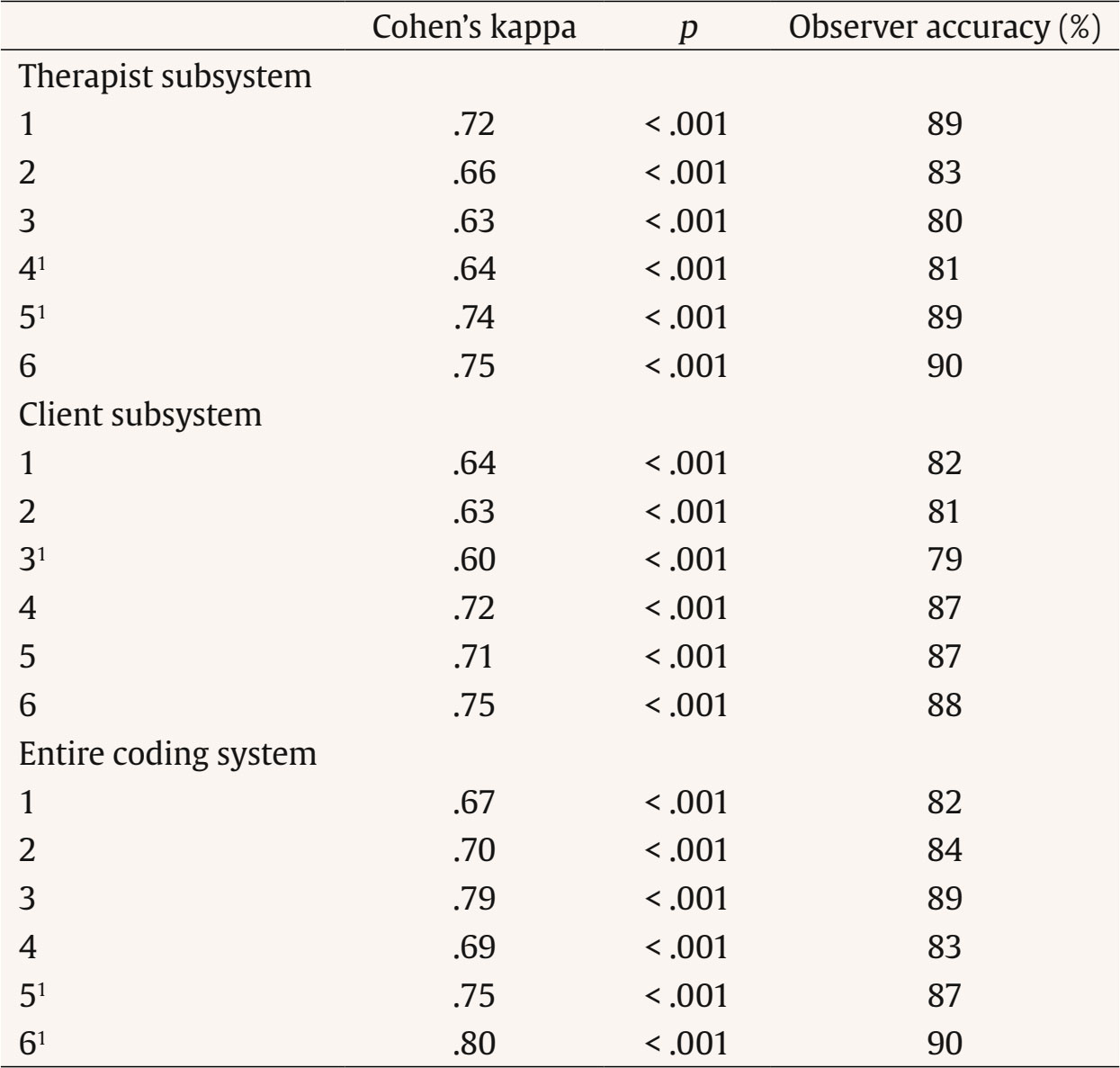 Note. 1Session via videoconference. As can be seen, kappa values obtained with the therapist subsystem ranged from .63 to .75, while observer accuracy ranged from 80% to 90%. In contrast, kappa values obtained with the client subsystem ranged from .60 to .75, while observer accuracy ranged from 79% to 88%. Finally, the inter-rater reliability of the entire coding system was analyzed. This was done to verify the adequacy of the values obtained when the two subsystems were used simultaneously. In this case, the kappa values ranged from .67 to .80, and the observer accuracy ranged from 82% to 90%. A total of 15,807 observation units were collected, providing broad coverage of behaviors identified in the scientific literature as relevant to the therapeutic relationship. The results indicate that the inter-rater reliability of the TRCS is adequate. Kappa values for the entire coding system are considered good to excellent, ranging from .67 to .80, with observer accuracy ranging from 82% to 90%, confirming that the kappa values were adequate. Furthermore, the statistical significance levels were below .01 in all cases. Therefore, we can reject the hypothesis that the interobserver agreement was due to chance. These results are particularly remarkable considering that the coding system has a high number of categories and subcategories and that a social level of analysis was used. In fact, observer accuracy for the entire coding system was higher than the level usually considered representative of social behaviors or expressions of affect (80%), and in several comparisons it was even higher than the usual cutoff of 85% (Gardner, 1995, as cited in Bakeman, 2023). We can also conclude that the inter-rater reliability of the TRCS subsystems is adequate. Reliability was analyzed separately for each subsystem, since they consist of two different sets of exhaustive and mutually exclusive categories. Kappa values are considered good, ranging from .63 to .75 for the therapist subsystem and from .60 to .75 for the client subsystem. Observer accuracy is also satisfactory, ranging from 80% to 90% for the therapist subsystem and from 79% to 88% for the client subsystem, again confirming that the kappa values were adequate. The levels of statistical significance obtained for both subsystems were also below .01, so that once again we can reject the hypothesis that the agreement between observers occurred by chance. Thus, the definitions of all categories and subcategories of the TRCS appear to be sufficiently objective, accurate, and comprehensive to allow for good interobserver agreement. Based on the above, it appears that each of the subsystems could be used independently to study the contribution of therapist or client verbal behavior to the therapeutic relationship. However, our recommendation is to always use both subsystems simultaneously to study the interaction between therapist and client. The first reason is that inter-rater reliability is higher when the complete coding system is used. This is probably because recording the verbal interaction helps to determine the beginning and end of the categories compared to when it is not recorded. The second reason is that analyzing therapists’ (or clients’) verbal behavior without considering what clients (or therapists) said before or after their performance may lead to incomplete or incorrect conclusions. The third and final reason is that the APA has warned that research has tended to neglect the client’s contribution to the therapeutic relationship (Norcross & Lambert, 2018). As previously explained, the TRCS is based on all of the “pantheoretical” elements identified in the literature as relevant to the therapeutic relationship. It includes elements classified by the APA as “demonstrably effective” (e.g., empathy or requesting feedback), “probably effective” (e.g., promoting treatment credibility), and “promising but insufficient research” (e.g., therapist self-disclosure) (Norcross & Lambert, 2018). This inclusion reflects the APA’s recommendation that these elements be examined in research on the therapeutic relationship, as preliminary evidence suggests their potential influence. Existing measures were also considered, particularly observational tools that allow for moment-by-moment analysis of the therapeutic relationship. This approach ensured that the system developed included all behaviors relevant to individual therapy with adults as described in the scientific literature. For example, from the SOFTA (Friedlander et al., 2006), behaviors such as expressing optimism, joking, normalizing, or assuring confidentiality were included because of their potential contribution to the therapeutic alliance. However, behaviors specific to family or couples therapy, such as containing overt hostility between clients or actively protecting one family member from another, were excluded. Similarly, client behaviors described in the TCCS (Ribeiro et al., 2013), such as the degree of agreement or disagreement, were included because they provide nuanced insights into how clients perceive the therapist’s actions. In contrast, behaviors such as challenging the client’s dominant maladaptive self-narratives were excluded because they are typically considered specific strategies for addressing problem behaviors (e.g., cognitive restructuring) rather than elements of the therapeutic relationship itself. We also adhered to Bordin’s (1979) conceptualization of the therapeutic alliance, including categories related to agreement on goals and tasks, as well as categories that promote the therapist-client bond (e.g., expressing support). In addition, we included behaviors known to be detrimental to the therapeutic relationship (e.g., making value judgments or expressing hostility) to identify potential detrimental factors and prevent adverse effects in psychotherapy (Knox, 2019). For all of these reasons, we believe that the TRCS is the most comprehensive tool developed to date for examining the therapeutic relationship in individual therapy with adults through moment-by-moment analysis. In comparison, the SOFTA is specifically designed for family or couples therapy, reflecting the unique nature of the therapeutic alliance in these contexts, which involves establishing and maintaining multiple alliances simultaneously (Friedlander et al., 2019). Similarly, the TCCS focuses exclusively on a single element of the therapeutic relationship: therapist-client collaboration. Furthermore, its design is based on narrative therapy, which limits its applicability to other therapeutic approaches. In terms of therapy modality, it appears that the TRCS could potentially be applied to both face-to-face and videoconference therapy, as all kappa values and observer accuracy obtained were reasonable. This would make sense, as despite the differences between the two modalities, these should not affect the basic therapeutic elements or treatment content (Calero-Elvira & Shih-Ma, 2016). However, the small sample size of videoconferencing sessions may limit the generalizability of these findings. Therefore, our findings should be interpreted as an initial indication of applicability rather than a definitive conclusion. Future studies with a larger sample of videoconferencing therapy sessions are needed to confirm whether inter-rater reliability is consistently maintained across modalities. If so, the TRCS could serve as a tool for investigating whether statistically different patterns of therapist-client interaction emerge in terms of the therapeutic relationship between face-to-face and videoconferencing therapy. It is important to point out the limitations of the developed measurement tool. The first limitation is its focus on the verbal behavior of the therapist and the client, with nonverbal behavior considered as complementary to verbal information. For example, paraverbal components such as intonation are included (e.g., laughter or a comical tone of voice for the “joking” category, or an irritated, rude, or sarcastic tone for the “expressing hostility” category). However, the TRCS does not allow for the specific or exclusive assessment of other nonverbal behaviors, such as eye contact or body posture, that are also critical to the therapeutic relationship (Flückiger et al., 2019). This limitation stems primarily from ethical and privacy considerations at the University Clinic, where video cameras are positioned to capture the therapist from the front and the client from the back, ensuring that the client’s face is never recorded. While this setup protects the client’s privacy, it limits the ability to capture detailed nonverbal cues from the client. In addition, specifically including this type of information would result in an overly large and unwieldy coding system, which could compromise the reliability of the coding process. This approach is supported by the recommendations of Bakeman & Quera (1997), who emphasize the importance of keeping coding systems simple and manageable. They also emphasize that conceptual categories should be placed at the same level of description, which would be difficult to achieve if verbal and nonverbal behaviors were integrated into a single system. As a possible solution, we propose the development of a complementary coding system dedicated exclusively to the analysis of therapist and client nonverbal behavior. This approach would allow for the independent study of verbal and nonverbal dimensions, thereby optimizing the analysis of each without compromising the clarity or reliability of the coding process. A second limitation of the TRCS concerns the generalizability of the results across psychotherapeutic approaches and multicultural contexts. Specifically, all of the psychologists in the sample used a cognitive-behavioral approach. Theoretically, the behaviors included in the instrument can be considered “universal” because they were derived from “pantheoretical” elements of the therapeutic relationship, which is also widely recognized as a common factor across psychotherapies (Norcross & Lambert, 2019a). Furthermore, all categories were derived from behaviors that the literature suggests are applicable to individual therapy with adults, regardless of case characteristics. Therefore, although therapeutic orientation and cultural context may influence the prevalence of certain behaviors (making some behaviors more or less common), their likelihood of occurrence should not vary significantly. Nevertheless, empirical testing is needed to confirm the appropriateness and reliability of the coding system across different therapeutic approaches and cultural contexts. Finally, increasing the sample size in future studies would not only increase the robustness of the findings, but also provide stronger evidence for the generalizability and cross-context validity of the instrument. It is not possible to assess the convergent and discriminant validity of the TRCS with other measures. The instrument we have developed is neither a conventional test nor a rating system, but a coding system. Since it does not provide scores, it is not possible to correlate it with scores from other instruments. In contrast, the TRCS enables the systematic observation and coding of each therapeutic relationship-related utterance that occurs during therapy. This approach allows the analysis of the interaction between therapist and client during the therapeutic session. By analyzing the verbal behavior at each turn, it is possible to conduct comparative and sequential analyses. In our view, this represents a strength rather than a limitation of the tool. Systematic observation is currently considered the most effective method for capturing therapist-client verbal exchanges that occur in the natural context of therapy (Del Giacco et al., 2019). In addition, there are already numerous conventional instruments that assess the alliance or other aspects of the therapeutic relationship with good psychometric properties (Flückiger et al., 2019; Vaz et al., 2023). However, these do not allow moment-by-moment analysis of the therapeutic relationship that observational coding systems do. Therefore, the APA itself recommends that future research use observational instruments that allow moment-by-moment analysis of the behaviors that contribute to the development of the therapeutic alliance (Norcross & Lambert, 2018). Thus, despite the limitations of the instrument, this coding system represents a first step toward analyzing the therapeutic relationship in individual therapy with adults through systematic observation of therapist-client interactions. As recommended by the APA (Norcross & Lambert, 2018), future research could use the TRCS in combination with traditional post-session measures such as those mentioned previously (e.g., the WAI, Horvath & Greenberg, 1989; or the CALPAS, Gaston & Marmar, 1994) to gain insight into what happens in the session. In this way, the TRCS is expected to help identify behaviors and patterns of therapist-client interactions that promote a good therapeutic relationship, so that evidence-based guidelines can be established to guide therapists toward more effective and/or efficient psychological interventions. Likewise, it is expected to identify those behaviors and interactions that hinder the attainment of the alliance so that they can be avoided. Numerous studies have shown that the alliance is a strong predictor of therapeutic outcome, yet the specific behaviors that constitute the alliance remain unclear. In part, this is because most studies use self-report measures to assess alliance strength rather than external observational measures that help describe which verbal interaction behaviors enhance the therapeutic relationship. As a result, the American Psychological Association (APA) has recommended that future research examine the components of the therapeutic relationship using a moment-by-moment analysis. Despite this recommendation, there are currently no observational instruments that analyze all the elements of the therapeutic relationship in individual therapy with adults on a moment-by-moment basis. To address this gap, we present what we believe to be the most comprehensive observational instrument to date for studying the therapeutic relationship using moment-by-moment analysis. Moreover, it is an instrument that has demonstrated good to excellent inter-rater reliability. Among other things, it will make it possible to identify behaviors that promote a good therapeutic relationship so that guidelines can be established to help make psychological interventions more effective and efficient. Conflict of Interest The authors of this article declare no conflict of interest. Acknowledgements The authors would like to thank Centro de Psicología Aplicada (CPA-UAM), as well as the therapists and clients who made this study possible. We would also like to thank Dr. Katerina Dounavi for her advice. Cite this article as: Guerrero-Escagedo, M. C., Calero-Elvira, A., Fernández-Regueras, D., & Luque-González, A. (2025). Therapeutic relationship coding system (TRCS): An observational tool for moment-to-moment analysis of the therapeutic relationship. Clinical and Health, 36(3), 135-144. https://doi.org/10.5093/clh2025a10 Funding M. Cristina Guerrero-Escagedo was supported by a research grant from the Universidad Autónoma de Madrid (Contrato Predoctoral para Formación de Personal Investigador; FPI-UAM) to conduct this research as part of her doctoral dissertation. Part of the study was also carried out during a visiting fellowship she received at Queen’s Belfast University (Northern Ireland), funded by the Programa de Ayudas UAM-Santander para la movilidad de jóvenes investigadores. Diego Fernández-Regueras’ contribution was supported by a master’s research grant from the Universidad Autónoma de Madrid (Ayudas para el Fomento de la Investigación en Estudios de Máster-UAM). The funding sources had no role in the design, collection, analysis, and interpretation of the data, nor in the writing of the article, nor in the decision to submit the article for publication. References |
Cite this article as: Guerrero-Escagedo, M. C., Calero-Elvira, A., Fernández-Regueras, D., & Luque-González, A. (2025). Therapeutic Relationship Coding System (TRCS): An Observational Tool for Moment-to-Moment Analysis of the Therapeutic Relationship. Clinical and Health, 36(3), 135 - 144. https://doi.org/10.5093/clh2025a10
Correspondence: ana.calero@uam.es (A. Calero-Elvira).Copyright © 2025. Colegio Oficial de la Psicología de Madrid


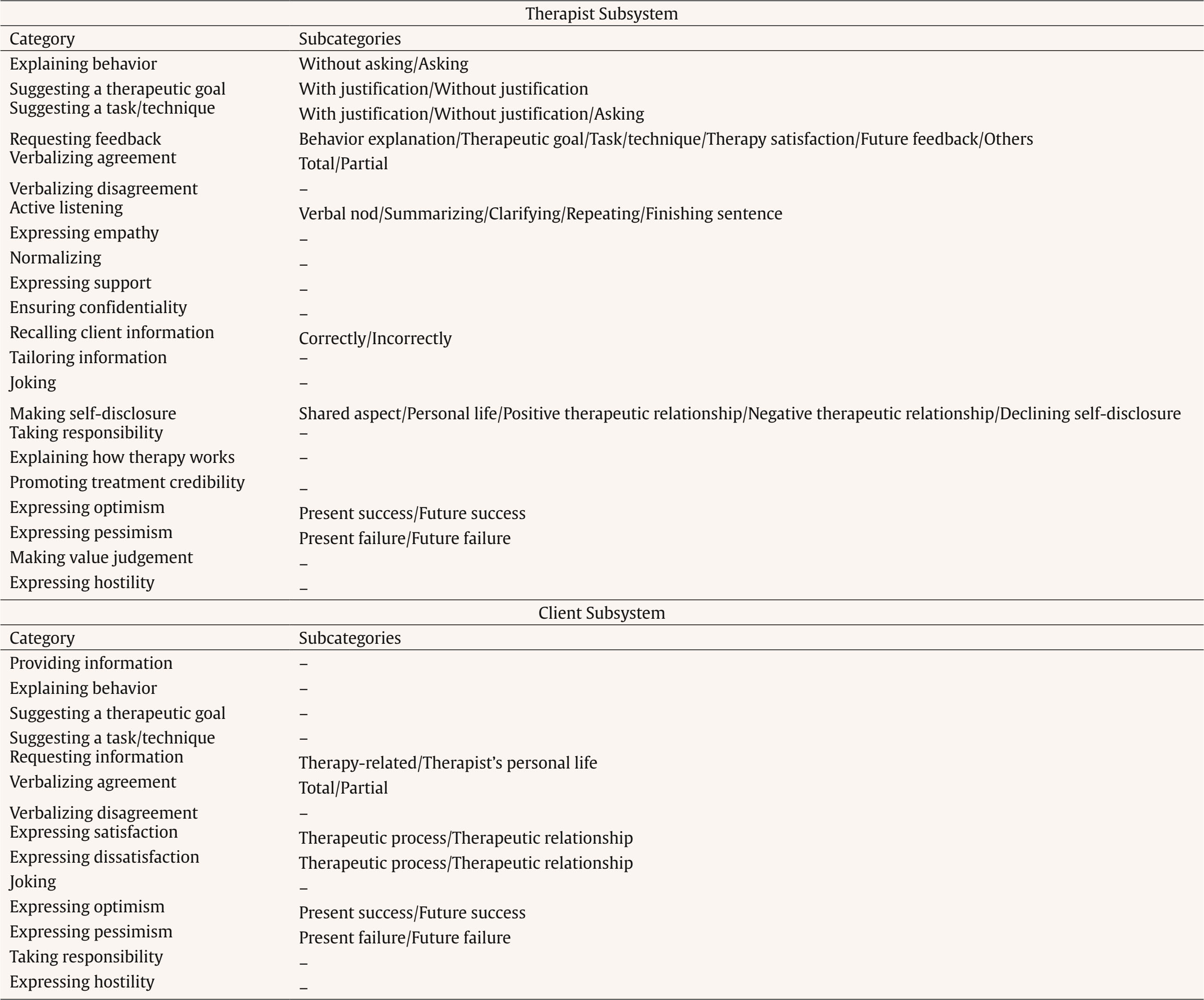







 e-PUB
e-PUB CrossRef
CrossRef JATS
JATS

